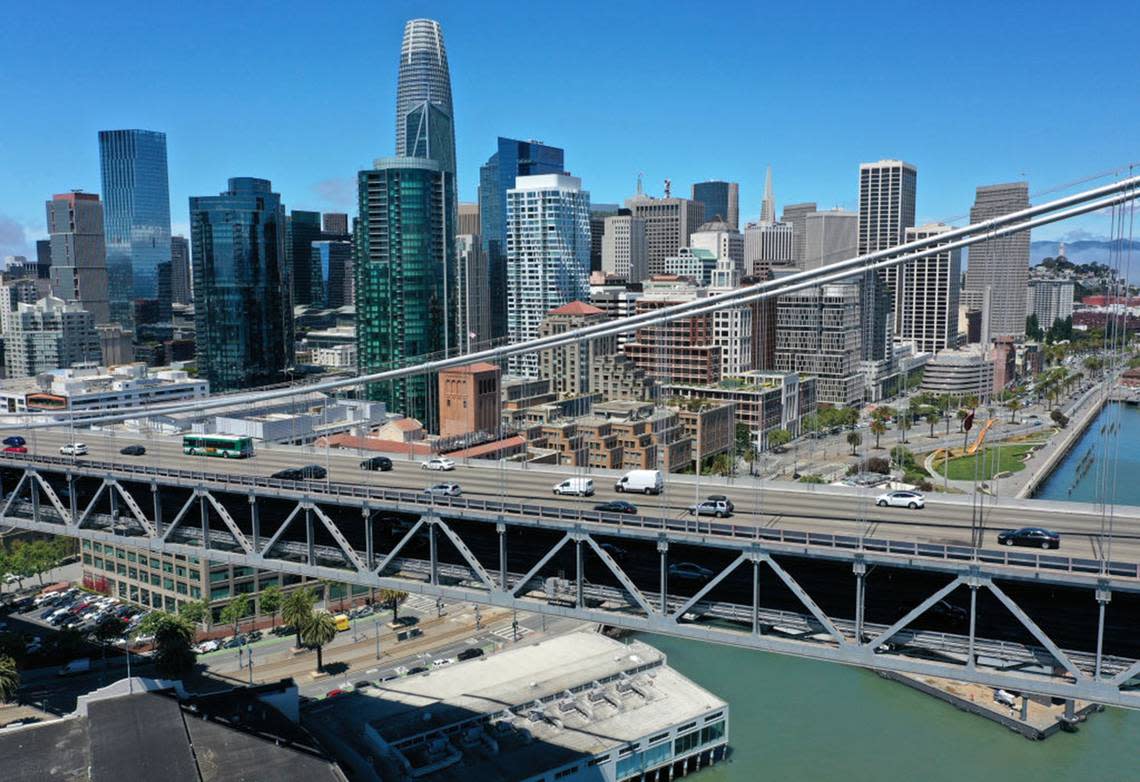Are California bridges safe? Here’s how many are in ‘poor’ condition, government says

Editor’s note: This story and visualization are part of our new “Data In Your Life” series, in which we mine public databases to tell quick stories about the world around us.
In the early hours of March 26, a 985-foot container ship struck the Francis Scott Key Bridge in Baltimore, bringing a portion of the 1.6-mile-long bridge down in less than 40 seconds.
Although the Key Bridge might have fallen no matter its condition, the high-profile accident focused attention on bridge safety across the nation.
The Federal Highway Administration maintains a public database of bridge ratings in every state that considers multiple parts of a bridge’s structure, including the deck, superstructure, substructure and culvert.
The federal government assigns three designations to rate the condition of bridges: Good, fair and poor.
In 2023, the Key Bridge was in the “fair” group, along with about 49% of the country’s bridges.
Another 44% are rated “good” and almost 7% are “poor.
Are California bridges safe?
In California, 47.7% of the state’s thousands of bridges carry the “fair” rating.
About 6.2% of California’s bridges were rated as in “poor” condition as of 2023. The data does not include the commonly used names of the bridges.
Of the 25,818 bridges in California, 1,591 were classified as structurally deficient in 2023, according to the American Road and Transportation Builders Association.
“This means one of the key elements is in poor or worse condition,” the trade organization said in its report breaking down California data from the Federal Highway Administration’s National Bridge Inventory.
In comparison, a total of 1,797 California bridges were classified as structurally deficient in 2019, the report said.
The state identified a total of 1,781 bridges as collectively needing more than $6.3 million in repairs, according to the American Road and Transportation Builders Association’s analysis.
Which counties have most ‘poor’ condition bridges?
According to Federal Highway Administration data, more than 20 California counties have 29 or more bridges rated in “poor” condition.
These are largely clustered in the Bay Area, Central Valley and Southern California regions.
Out of Sacramento County’s 734 bridges, 29 are rated as being in poor condition.
About 15% of Stanislaus County’s 380 bridges are considered in poor shape, while a tenth of San Joaquin County’s 643 bridges — 64 — are in poor condition.
Meanwhile, Merced County has 48 bridges with poor condition ratings. The county has 527 bridges total.
Forty of Fresno County’s 909 bridges are in poor condition.
On the Central Coast, 26 of San Luis Obispo County’s 400 bridges are in poor condition.
Why did Key Bridge in Baltimore collapse?
The Key Bridge in Baltimore relied on piers, which were essential to its structural integrity.
Without sufficient protective barriers surrounding the piers, other bridge components couldn’t compensate for the missing support when the large container ship, called the Dali, crashed into one of the piers, The New York Times reported in March.
Even with stronger protective barriers, it’s possible the bridge still wouldn’t have been able to withstand a hit from such a large ship.

